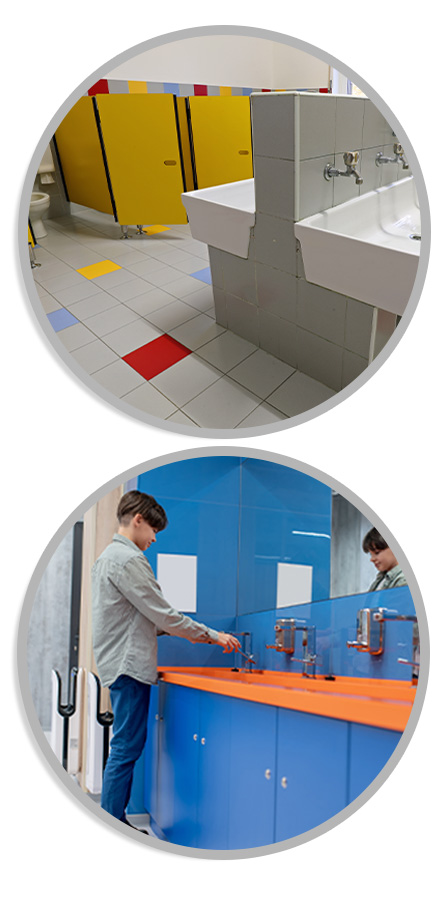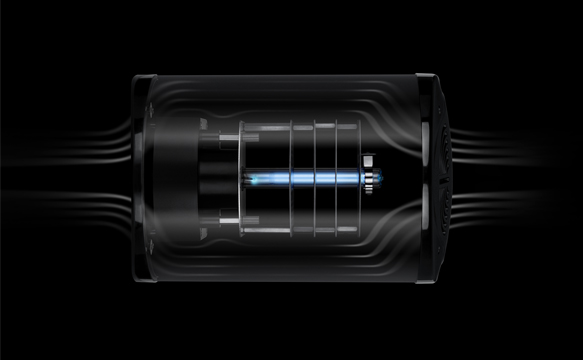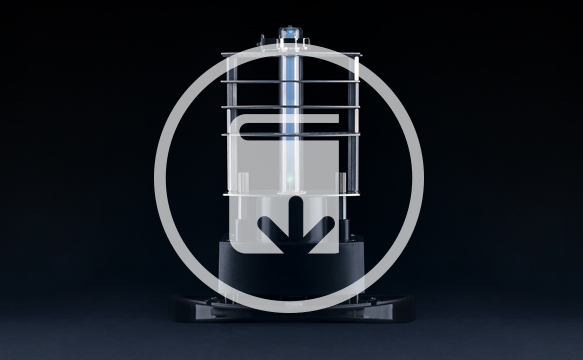Odour control for boys' toilets: a hygiene challenge solved
Odours are a challenge across all types of washrooms, whether gendered, unisex or neutral. High usage, poor ventilation and limited cleaning access can all contribute to unpleasant smells. Some environments, however, present greater difficulties than others, especially boys’ toilets in schools and youth venues.
This article looks at why odour control is more complex in boys’ washrooms, how they differ from men’s and ladies’ toilets, and how AIRsteril can provide lasting results.
Why boys’ toilets create more odour problems
Poor aim and urine splashes
In school and youth settings, toilet use is often less accurate. Urine frequently ends up on floors, walls and surrounding fixtures. Even with regular cleaning, these deposits can soak into grout and flooring materials. Worse still, users unknowingly walk through the urine and spread it further throughout the facility, adding to the hygiene and odour challenge.
Heavy usage and limited oversight
Toilets in schools, sports centres and other public buildings can see dozens of users per hour. In many cases, there is little or no supervision. Smells develop quickly between scheduled cleans, especially when maintenance issues are left unreported.
Behavioural habits and unflushed toilets
Younger users are less likely to report problems or flush consistently. Where flush mechanisms are broken or neglected, odours and bacteria build up faster. Repeated failure to flush is a common contributor to long-standing smells.
Comparing boys’, men’s and ladies’ toilets
Men’s washrooms experience odour issues largely due to volume of use and urinal splashback. However, older users tend to have more consistent hygiene habits, and maintenance issues are often reported more reliably.
Ladies’ washrooms avoid some obvious issues but face others, such as unflushed toilets and the management of sanitary bins. These can become odour sources if not properly handled or maintained, especially in high-traffic areas.
Gender-neutral washrooms can face the same odour challenges as any other facility, especially when used by large numbers of people. Shared responsibility and mixed usage patterns can make cleanliness harder to maintain without continuous air treatment.
Why surface cleaning and fragrance are not enough
Smells in toilets are caused by bacteria feeding on waste and releasing odourous gases into the air. While cleaning is essential, it only affects visible surfaces. Fragrance dispensers simply mask the issue for a short time. Without continuous air treatment, odours will return quickly.
The AIRsteril approach
AIRsteril works by purifying the air, eliminating airborne bacteria, mould and volatile compounds before they settle. It operates silently and safely throughout the day without the need for manual activation or daily maintenance.
Key benefits:
• continuous operation, even during use
• no consumables or sprays to replace
• only one annual lamp change required
Stop the smell at the source
If boys’ toilets or other problem areas in your facility are frequently the subject of complaints, AIRsteril offers a long-term solution that works around the clock. Contact us to learn more about our low-maintenance, high-performance systems.



